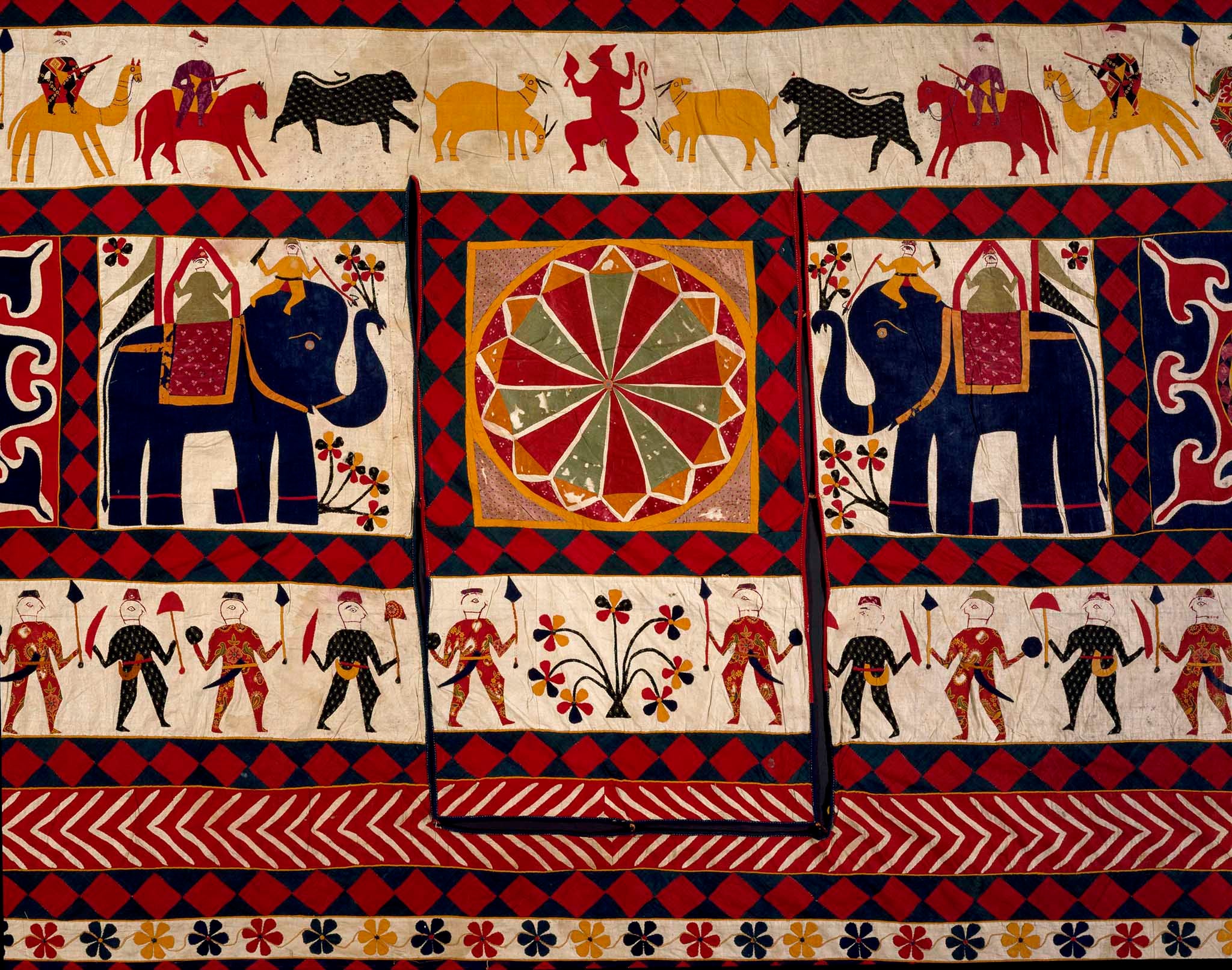'Outstanding' Indian wall hanging rescued from the scrap heap goes on show at the V&A
Art expert found important 'rural folk piece' dumped on a New York pavement

Your support helps us to tell the story
From reproductive rights to climate change to Big Tech, The Independent is on the ground when the story is developing. Whether it's investigating the financials of Elon Musk's pro-Trump PAC or producing our latest documentary, 'The A Word', which shines a light on the American women fighting for reproductive rights, we know how important it is to parse out the facts from the messaging.
At such a critical moment in US history, we need reporters on the ground. Your donation allows us to keep sending journalists to speak to both sides of the story.
The Independent is trusted by Americans across the entire political spectrum. And unlike many other quality news outlets, we choose not to lock Americans out of our reporting and analysis with paywalls. We believe quality journalism should be available to everyone, paid for by those who can afford it.
Your support makes all the difference.Two decades ago an art appraiser stumbled across an extraordinary length of hand-woven Indian fabric tossed out on a New York pavement. Realising the importance of what experts call an “outstanding” piece, he saved it from the scrap heap and donated it to the V&A.
The 17-metre wall hanging will form a key part in a major forthcoming exhibition of Indian fabrics at the London museum.
It is the first time the “rescued” fabric has been shown publicly because of its size and the origins of how it travelled from a small Indian village to the US and why it was dumped remain shrouded in mystery.
The Fabric of India forms part of the gallery’s festival celebrating Indian culture and will include 200 items made by hand
Rosemary Crill, co-curator of the exhibition which opens in October, was particularly excited about displaying the wall hanging found on a pavement in Brooklyn’s East Side, for the first time.
Ms Crill, who is senior curator in the V&A’s Asian department, revealed that US art appraiser Jerome Burns had approached her in 1994 about taking the textile “as he said it was too big for him to do anything with”.
After he signed over the ownership, he told Ms Crill that he had found it “literally heaped up a pavement. He happened to be walking past and as he had an interest in India, recognised where it was from,” she said. “He thought: ‘They can’t just put this in a skip’.” With the help of a friend and a van, he rescued the wall hanging.
The fabric is for a Hindu community, described as a “rural folk piece” with representations of the gods Ganesh and Hanuman. The exhibition’s co-curator said: “‘Textiles of this large scale are rarely seen outside India, and this one is outstanding in its striking design and its relatively good condition, considering what we know of its life before it came to the V&A.”
There is a similar piece in the Calico Museum of Textiles in Ahmedabad, she added but this has spent the past 21 years rolled up in V&A’s storage facility as it was too big to display until now.
“It’s probably early 20th century and it has clearly been used quite a lot. Why it came from India to New York we don’t know. It would have been used for special occasions, maybe weddings and Diwali,” Ms Crill said. The sad thing, she added, was that Mr Burns and his wife would not see it. The museum researched and found they had died in the early 2000s.
The exhibition will tell the story of how Indian textiles travelled the world from as far back as the 3rd century to the present day, Ms Crill said. It will show items from “everyday fabrics to unseen treasures” from sacred flags to 19th century bandanna handkerchiefs.
Rare displays include the tent used by infamous ruler Tipu Sultan, a spoil of war after his army was defeated by the British in 1799, a piece of Mughal dress, to a costume for Bollywood film Devdas in 2002, that was so heavy the actress could not move in it.
Ms Crill said important objects include possibly the earliest surviving fragment of textile dating to the third century and excavated by Aurel Stein.
Also on display is the only surviving length of Indian texture from the early 19th century dyed in the “bandanna” technique, which gave the name to modern day bandannas around the world. Ms Crill said: “The Hindi word means ‘to tie’ and is the name given to the spotty tie-dye textiles used in India.
“They came to Europe in the trade and all the Indian terms were written down by the East India company. Now the bandanna is not necessarily spotty.”
Join our commenting forum
Join thought-provoking conversations, follow other Independent readers and see their replies
Comments